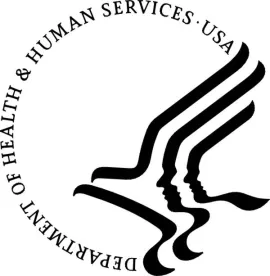On July 25, 2022, the U.S. Department of Health and Human Services (“HHS”) issued a proposed new rule[1] that significantly expands the scope of protection available to vulnerable populations under Section 1557 of the Affordable Care Act (the “ACA”).
The proposed rulemaking represents an important alignment with President Biden’s executive orders to advance healthcare equity by recognizing that equity begins with access, which is hindered in the presence of discrimination. While the proposed rule establishes a number of general provisions that broaden the scope of protections for all demographics, the rule specifically enhances protections for those populations that have been consistently marginalized due to sexual orientation and gender identity.
Politicizing Section 1557
The plain language of Section 1557 prohibits discrimination on the basis of race, color, national origin, sex, age, and disability in any federally-funded health program or activity. However, the extent of the statute’s implementation depends on rules issued by HHS, which have been at the mercy of the policy initiatives of the respective administration in office at the time of the rulemaking. As such, Section 1557’s applicability has widely varied since its introduction under the Obama administration, especially with respect to communities that have been caught in the political cross-hairs, such as the LGBTQ+.
The Obama-era rule,[2] established a broad interpretation that recognized a private right of action. In 2020, the Trump administration, HHS issued a rule[3] that significantly limited boththe scope of relief available and the scope of persons protected under Section 1557. Specifically, it removed the private right of action, excluded a number of healthcare programs and services from liability, and limited key provisions with respect to sexual orientation and gender identity. Last year, under the Biden administration, the pendulum swung back to the Obama-era when HHS issued an official notice[4] to recognize sexual orientation and gender identity as protected demographics under Section 1557.
Immediate Effect of the Proposed Rule and Looking Forward
1. Sexual Orientation and Gender Identity
The proposed rule’s most sweeping provision, addressing health equity on a structural level, is the reinstatement of Section 1557’s application to all federal health programs and activities, including health insurance issuers and, for the first time in six years, Medicare Part B providers.[5] Given the prohibitive cost of uninsured healthcare, addressing discrimination at the coverage level is an impactful way to ensure healthcare access.
The proposed rule also follows the Supreme Court’s 2020 decision in Bostock v. Clayton County, which recognized sexual orientation and gender identity as protected demographics under Title VII of the Civil Rights Act. Codifying the protections established in Bostock is a crucial step toward rectifying health disparities, especially considering LGBTQ+ individuals suffer higher rates of health complications and experience disproportionate barriers to care.[6]
2. Women’s Rights
While the proposed rule follows the Supreme Court’s Bostock decision, it makes a marked departure from the Supreme Court’s recent opinion in Dobbs v. Jackson Women’s Health Organization. In proposing the new rule, HHS unequivocally clarified that the statutory prohibition against discrimination “on the basis of sex” encompasses discrimination on the basis of pregnancy-related conditions, “including pregnancy termination.”[7]
Given the current political climate, the public comment period, which is open through September 25, 2022 will no doubt yield impassioned commentary from both sides of the aisle. However, HHS appears poised to implement Section 1557’s protections to the greatest extent possible, in furtherance of the current administrative push for social justice through health equity. The extent to which the final rule will encompass the protections of this proposed rule remains to be seen, but there is no doubt that it will continue to be shaped by the national momentum behind the promotion of health equity.
FOOTNOTES
[1] See Fact Sheet: Nondiscrimination in Health Programs and Activities Proposed Rule Section 1557 of the Affordable Care Act, OCR (July 29, 2022), available at Fact Sheet: Nondiscrimination in Health Programs and Activities Proposed Rule Section 1557 of the Affordable Care Act | HHS.gov.
[2] See 81 Fed. Reg. 31375.
[3] See 85 Fed. Reg. 37160.
[4] See 86 Fed. Reg. 27984.
[5] See 87 Fed. Reg. 47887; see also 81 Fed. Reg. 31383.
[6] See Lesbian, Gay, Bisexual, and Transgender Health, Office of Disease Prevention and Health Promotion (2020), available at Lesbian, Gay, Bisexual, and Transgender Health | Healthy People 2020.
[7] 87 Fed. Reg. 47878.




 />i
/>i

